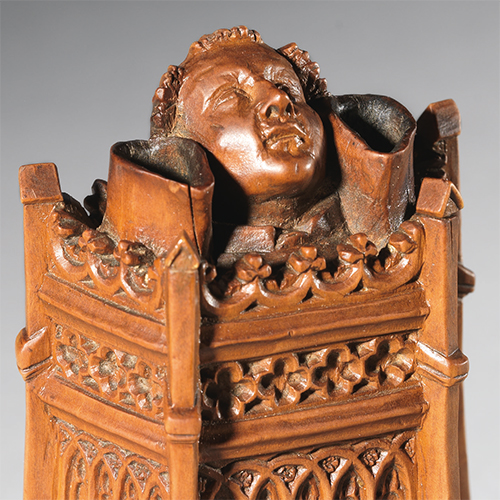Different Hands:
On a Late Fourteenth-Century Carthusian Inkwell
DOI:
https://doi.org/10.52476/trb.9723Abstract
A recently acquired late fourteenth-century boxwood micro-sculpture of a monk in a pulpit is in fact an extremely rare example of a late medieval inkwell. The object’s unusual iconography seems at first to be mocking in intent, given the awkward way in which the monk, arms upraised and missing his hands, is imprisoned in his pulpit. He conjures up associations with amusing illustrations in the margins of manuscripts and the often anti-clerical ridicule expressed by the carvings on misericords. And yet it is quite conceivable that the object had a serious purpose. The silent monk, who ‘lends’ his hands to the owner of the inkwell, is probably a Carthusian who, according to the Rule of his order, may not speak, and can only spread the word of God in writing. In view of the style and quality, this curious little carving has to be attributed to a prominent sculptor who was active in Paris or the Southern Netherlands around 1380-1400. He must have made it as a special commission, probably for a monk in a distinguished charterhouse.
Downloads







